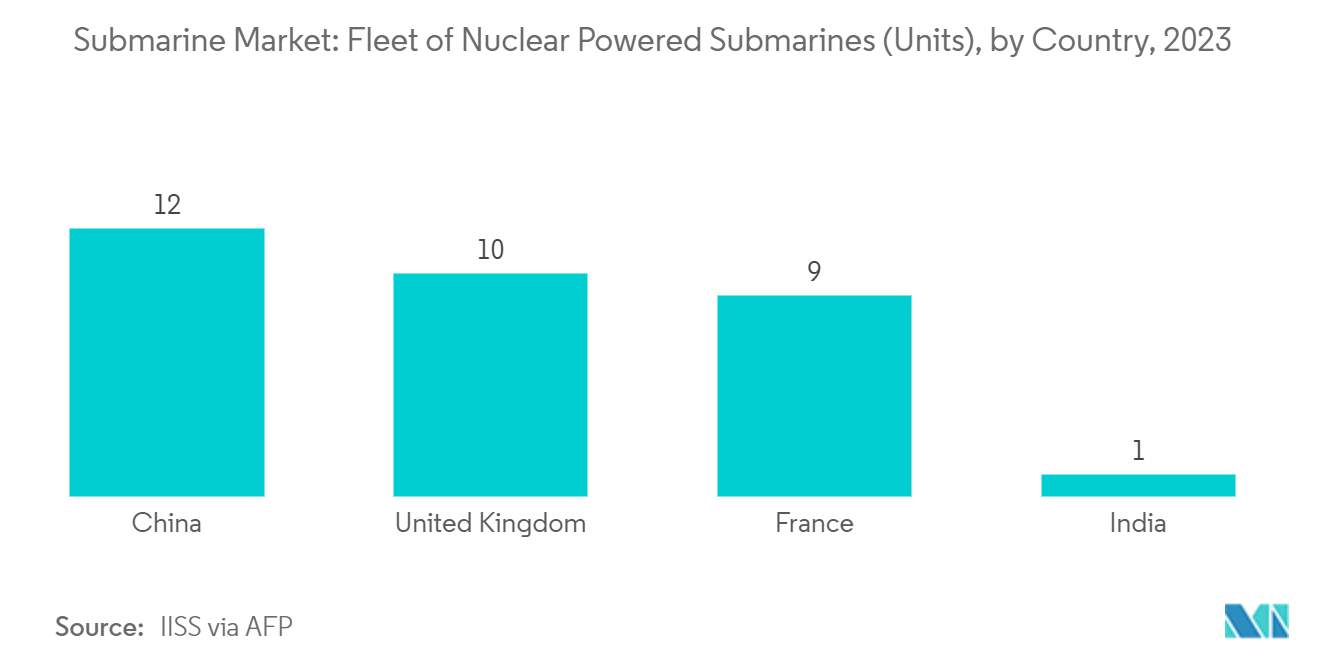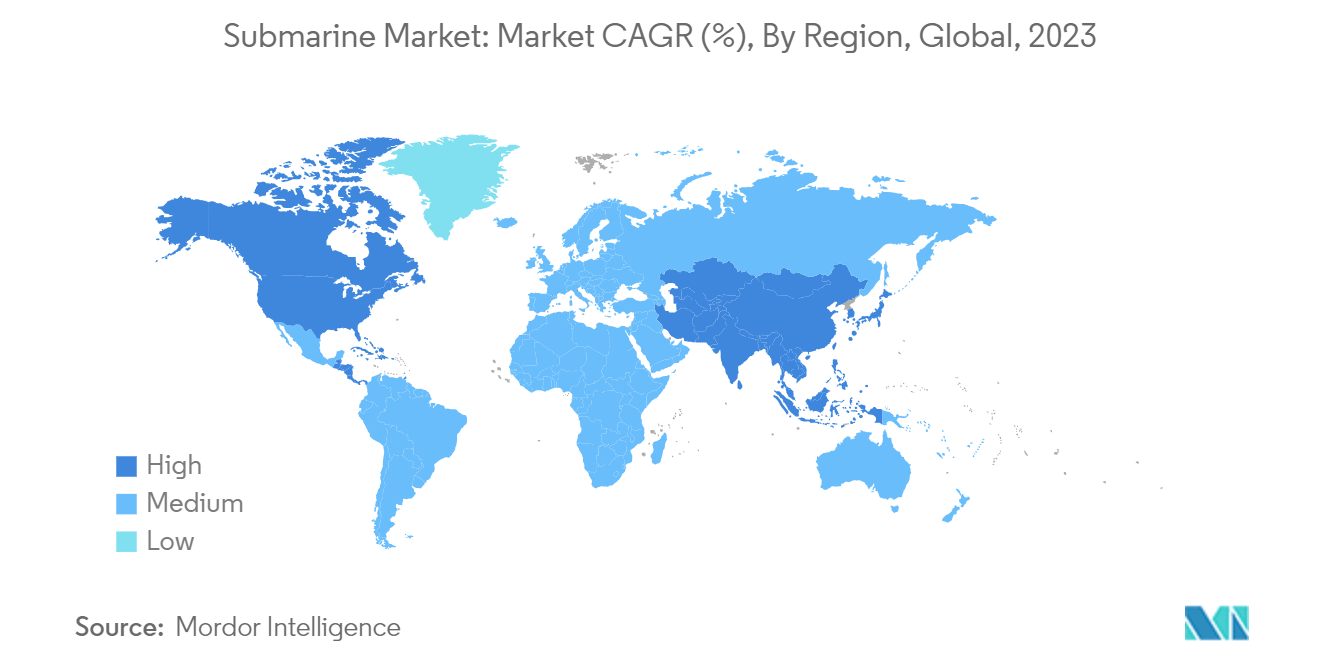Market Trends of Submarine Industry
Nuclear-powered Submarines (SSN) are Anticipated to Record the Highest CAGR During the Forecast Period
A nuclear submarine does not necessarily carry nuclear armaments. These submarines offer significant performance advantages over their "conventional" (typically diesel-electric) counterparts. Their nuclear propulsion, independent of air, eliminates the frequent surfacing needed by conventional submarines.
The substantial power output of nuclear reactors enables these submarines to sustain high speeds for extended periods. With infrequent refueling needs, their range is virtually unlimited, with voyage times primarily limited by factors like food and consumable restocking. However, the high cost of nuclear technology restricts ownership to only a handful of nations worldwide.
Despite this, multiple countries are actively pursuing acquisition programs for nuclear-powered submarines. Notably, in March 2023, the US, Australia, and the UK unveiled a framework allowing Australia to procure nuclear-powered submarines, elevating Australia to the seventh nation with this technology. As per the agreement, Australia is set to receive three US Virginia-class nuclear-powered submarines by the early 2030s, with an option for two more.
As countries increasingly collaborate on advanced nuclear submarine projects and ramp up investments in defense modernization, the market is poised for growth in the coming years.

North America will Witness Remarkable Growth During the Forecast Period
North America is poised to witness substantial growth over the forecast period, driven by increasing defense capabilities and military budget. This, combined with significant R&D investments from key players, is fueling the development of new, cutting-edge submarines in the region. The US Department of Defense (DoD) reported a notable uptick in military spending, which increased from USD 728 billion in FY22 to USD 797 billion in FY23.
The US operates four nuclear-powered submarine classes: Ohio, Los Angeles, Seawolf, and Virginia. Notably, the US Navy's modernization strategy includes an ambitious plan to introduce two to three Virginia-class attack submarines annually until 2043. Additionally, the Navy aims to procure 36 Virginia-class vessels by the end of FY 2026.
There are several emerging technologies in the market. Manufacturers are honing in on advancements in submarine operational life cycles and underwater detection capabilities. For instance, the US Navy's January 2023 announcement highlighted an accelerated timeline for its Columbia-class SSBNs. These submarines, touted as the world's most advanced, are set to be operational by 2031, with a service life extending well into the 2080s.
The new submarines are engineered for 42-year service life, featuring a 'life-of-ship' reactor core design that eliminates the need for mid-life refueling. Notably, these advancements mean the US Navy could operate with just 12 SSBNs while maintaining the sea presence equivalent to its current fleet of 14 Ohio-class ballistic missile submarines.
The market is also exploring novel detection technologies. These include heightened use of lower-frequency active sonar and non-acoustic methods for detecting submarine wakes at short ranges, which are slated for integration into future submarine classes.


